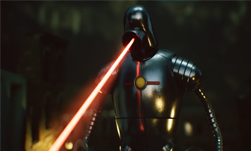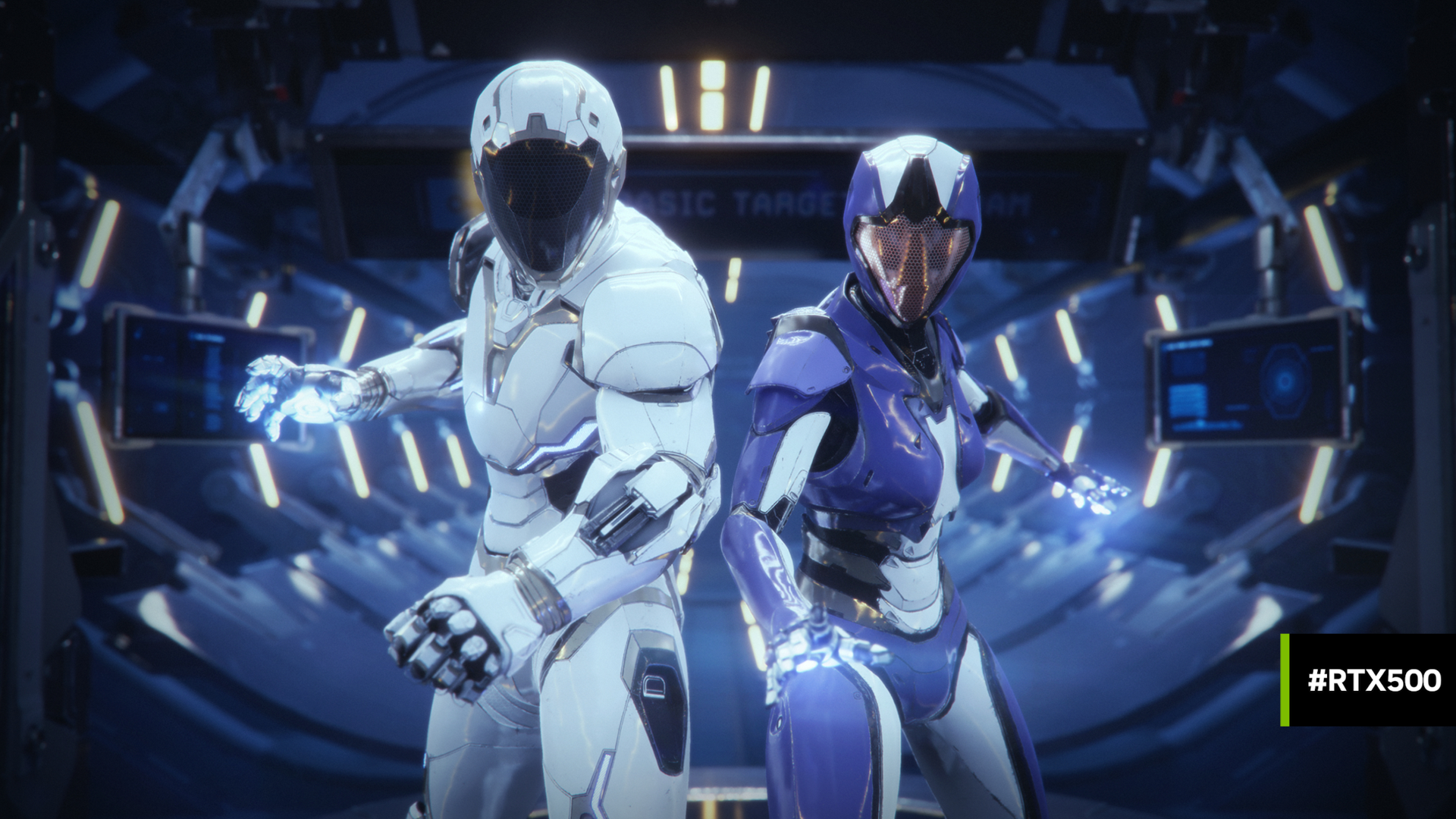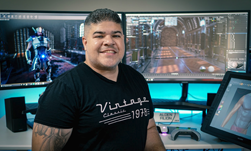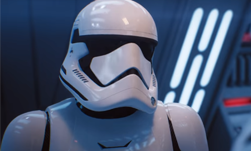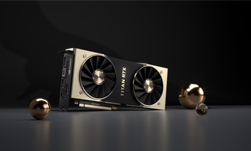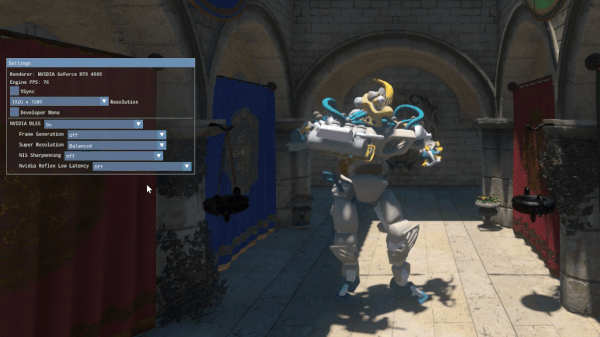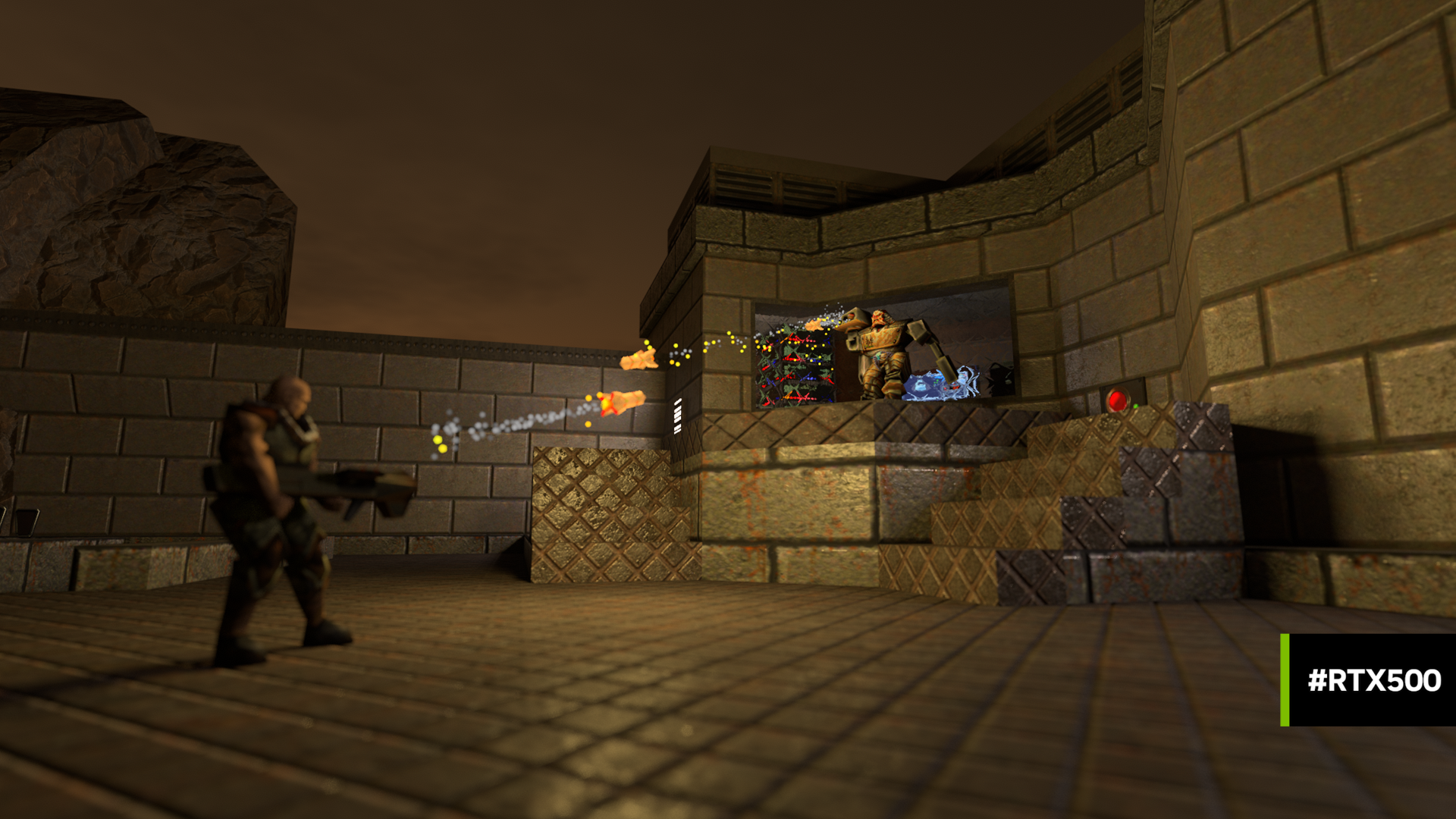How Christian Hecht Single-Handedly Built DXR Spotlight Demo “Attack From Outer Space” in One Month
Ok, first off, you have to watch the 1:42 minute video below, which showcases Christian Hecht’s winning contribution to NVIDIA’s DXR Spotlight Contest. It’s called “Attack from Outer Space”, and it’s awesome.
We talked to Christian Hecht to better understand how he did it, and what he learned from the process:
NVIDIA: How long did it take to develop the Attack from Outer Space tech demo?
Christian: I worked on it for about four weeks solely in my spare time.
NVIDIA: Was the demo initially built with ray-tracing in mind?
Christian: Yes, it was specifically built to showcase ray tracing in UE4.
NVIDIA: What DXR features did you incorporate into “Attack from Outer Space” and why?
Christian: Since the demo takes place in a miniature 1950’s film set, It features of a lot of chrome, glass and small objects. Ray traced reflections, shadows and ambient occlusion played a vital role in rendering everything with much higher visual coherence.
NVIDIA: Did you experience any bottlenecks or challenges when incorporating real-time ray tracing into the demo? If so, how did you overcome them?
Christian: Maintaining performance was a constant challenge. Luckily UE4 allows to tweak every aspect of its ray tracing features via cvars. This blog post contains a lot of useful information regarding performance optimization: https://devblogs.nvidia.com/introduction-ray-tracing-unreal-engine-422/
NVIDIA: Do you have any advice on materials to use when building an environment that will be ray traced?
Christian: Material complexity can have an impact on performance. The ray tracing quality switch node is a great way to simplify aspects of the material that directly affect ray-tracing.
NVIDIA: What tips would you provide to other developers new to real-time ray tracing?
Christian: Rather than turning every surface of your environment into a shiny mirror, think of how ray-tracing can enhance the visual quality of your project in context of its setting and overall aesthetic. Making use of reflections in a subtle way is not only more pleasing to the viewers’ eye, it also helps maintain performance.
NVIDIA: Let’s talk influences… from film to comics to games, what inspired the unique look and feel of Attack from Outer Space?
Christian: I mainly took inspiration from vintage Science-Fiction magazines and movies like Amazing Stories and The War of the Worlds. Apart from that, the amazing 1950’s color photography by Fred Herzog and Ken Oakes greatly influenced the overall tone and mood I tried to capture.
NVIDIA: What’s next for Attack from Outer Space?
Christian: Overall I’m pretty happy with the demo in its current state and I’ve already started brainstorming ideas for my next project. It’s still early days but it’s safe to say it will make extensive use of ray tracing.
NVIDIA: If readers download the executable of Attack from Outer Space, what would you want to make sure they pay attention to?
Christian: I hope they appreciate the general mood and in particular the visual coherence I mentioned earlier. The devil is always in the details and I spent a lot of time getting all the little imperfections in the models and textures just right.
NVIDIA: What was your biggest personal learning from working on this project?
Christian: My goal with this project was not only to create a demo that is visually striking, but also fun to play. Since I’ve never created an interactive demo before, the gameplay and performance aspects of it were the biggest challenges for me personally. I’ve learned a lot during those four weeks and I’m eager to take it to the next level with the project I’m working on next.
The “Attack from Outer Space” demo can be found here.
To learn more about Christian’s work, please check out his artstation page.
